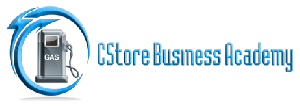Due diligence is a process where we try to find out the facts, figures, and all relevant information about a business we are looking to purchase or lease. Simply put it is a fact-finding mission about a business. Simple psychology tells us if a business is doing great, making money then why would anyone sell them right? A very valid question or concern for any buyer.
The first question you need for them to answer is why are they selling the business. This is a very important part but do assume you may not get the right answer. So you may need to do some legwork and research. You may even have to go to the local city planning office to find out if some new Gas Station or C-Store is coming up in that area. Next you need to check if they have a strong competitor or two who are selling fuel at a very low margin and if that is the reason the seller is trying to get out of the business.
Typically the seller will furnish you something call the P&L for 12 months which are simple profit and loss statements usually prepared by their accountant, these documents can be tricky and sometimes do not paint the true pictures. Whatever documents they furnish you, read through them, try to summarize them in your own way. Remember there are few numbers that all of us are interested in when it comes to any small business like gas stations.
- Monthly inside sales or nonfuel sales
- Monthly fuel sales
- All the fixed expenses
- All the variable expenses labor, utility and such
- Misc expenses like license renewal fee, accounting fees, cleaning or pressure washing, etc
- COGS of all nonfuel
- COGS of fuel
(* COGS -= Cost of Goods Sold)
Now the math is simple; you add all the sales deduct all the COGS you get gross profit
Now that you have the gross profit dollars, we need to deduct all the expenses from the gross profit, and you get the net profit
Most of the P&L usually provide all that for you, but the question is how accurate are they?
I usually do not rely much on the P&L myself I do more in-depth analysis and find the real numbers, and often they do differ from what the P&L shows
If you like a particular business and want to dig deep you can then ask for additional documents, such as their monthly payroll book where you get the actual figured of how much labor cost they paid that month. Then I ask for 2 months of all the invoices, any and all inventory they bought including the fuel invoices. I add them up and see if they match the P&L COGS, this is a very good way to find out the actual picture
You can then ask to see all their other expenses like utility and maintenance I do ask to see the actual bills and invoices from the utility company.
Once you are satisfied with these numbers, last thing you need to check is the profit margin on products they sell and compare them with their competitors, this is the last step and a very important one. What you are trying to figure out is what their profit margin is again I will give you examples in dollar amount, so it is easier to understand. Let’s say you buy something for 4 and sell it for 6, the way you calculate the profit margin on this 6-4=2/selling price 6 =33% but don’t confuse it with mark up, mark is not the same as profit margin. One simple example and difference between the two is this, say you bought a candy bar for $1, and you resell that at your store for $2. In this case, your profit margin is 50% while your markup is at 100% meaning you marked up your price equal to what you paid for the product. In business terms and calculation, we hardly ever use the term “Markup”.
Go through some of their tobacco, cigarette and beer and soda prices, look at their selling price vs their cost and do the math find out what is their actual profit margin is on each of this category.
Okay now let’s talk about a typical gas station and the product category and what is the average profit margin of those product categories.
The main 8 categories are:
- Cigarette 13-17%
- Soda/drinks/30-35%
- Grocery(33-45%)
- Beer/wine(17-24%)
- Auto Accessories/motor oil(50%)
- Tobacco(23-28%)
- Deli(50%)
- Last but not the least is Fuel
For fuel it is hard to have a set margin as this price is often set by your larger competitors, but typically we all like to stay at least above 6-10 cents/gallon gross profit on this category, I will talk more in depth about how to price and market gasoline at a later episode as this is a very broad and vast topic.
Make sure to check and cross check again, so you know you the numbers you calculated at accurate. Once you have the net income in your hand, it is easier for you to decide if this is a viable business for you to invest or not.
Hope I was able to clarify what and how to perform a proper due diligence on a business. If you have any question, please feel free to ask me by going to the “Ask Me” tab on the menu. Also don’t forget to sign up for my newsletter by clicking below this post.
Business 911

Coming Soon! "Small Business 911" Sign up for the newsletter to know when it's here!

